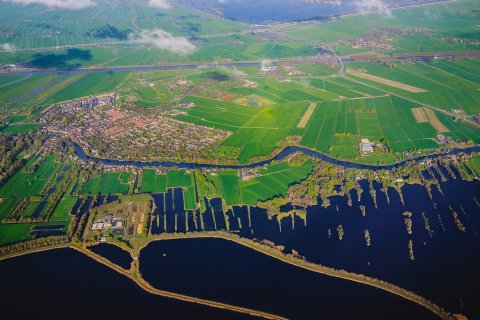Tracking the Netherlands' journey to a circular economy: The Material Flow Monitor
The Dutch government has set itself some ambitious goals: the economy should be 50% circular by 2030 and fully circular by 2050. But how can we monitor the circularity of something as complex as the economy? Statistics Netherlands (CBS) has developed a method to monitor one aspect – material flows in the Netherlands. The Material Flow Monitor database integrates existing statistical data to derive indicators for the circular economy: numbers that provide insight into the circularity of different sectors. To help other countries develop similar approaches and facilitate the transition to the circular economy worldwide, a new article co-authored by Vivian Tunn from the Copernicus Institute of Sustainable Development shares this innovative methodology.

The Netherlands is on a mission to create a circular economy, where resources are used for as long as possible, and waste is kept to a minimum. Circularity indicators for different sectors of the economy are a valuable tool for policymakers as they help identify areas that need improvement to achieve the government’s circular economy goals. For example, it can show the virgin material usage and waste generation of a sector, indicating the current level and future potential of material circularity in that sector.
Already creating impact
The Material Flow Monitor is already making an impact. The Netherlands Environmental Assessment Agency (PBL) publishes a report on the state of the Dutch circular economy every two years, and the indicators developed using the Material Flow Monitor are included in the most recent report, published in January 2023.
The new database includes a wealth of relevant information from various sources. This includes data on the extraction of natural resources within the Netherlands and the import and export of goods, as well as details on how products and materials move between sectors of the Dutch economy. Carbon dioxide and other pollutant emissions as well as other waste from economic activities are also included. Previous monitoring systems were not updated regularly and not all available at the same place, making it difficult to track progress towards the circular economy.
Sharing science for a circular economy
The Material Flow Monitor was developed as part of the Dutch Work Programme Monitoring and Steering Circular Economy, a research collaboration of several Dutch institutes including Utrecht University’s Copernicus Institute of Sustainable Development. After Statistics Netherlands completed the Material Flow Monitor, the database and indicators were further improved within the Work Programme.
The Netherlands is one of the first countries to have developed such a Material Flow Monitor, and it has quickly become a cornerstone of the Dutch efforts to monitor the circular economy. To help policymakers, researchers and scientists from other countries develop a similar method and accelerate the growth of the circular economy worldwide, the method used to develop the database and indicators was published in the Journal of Industrial Ecology. The article is co-authored by Roel Delahaye from CBS, Vivian Tunn, Assistant Professor in Circular Economy at the Copernicus Institute of Sustainable Development, and Professor Arnold Tukker from Leiden University and TNO.
Publication
Delahaye, R., Tunn, V. S., & Tukker, A. (2022). Developing a material flow monitor for the Netherlands from national statistical data. Journal of Industrial Ecology.

